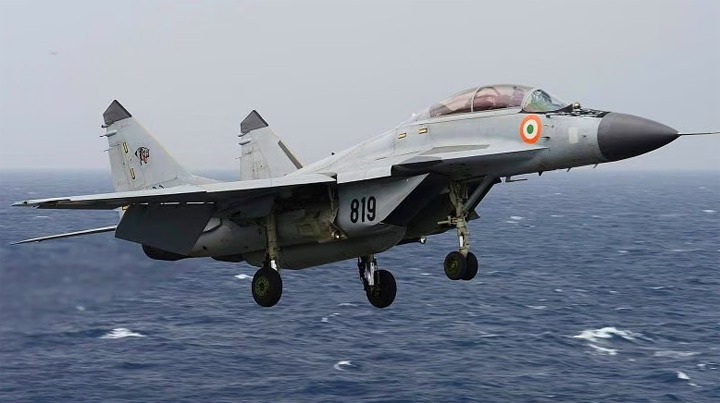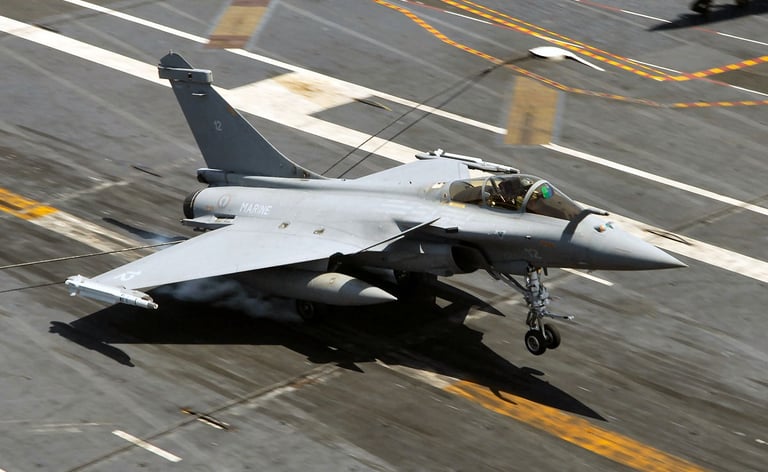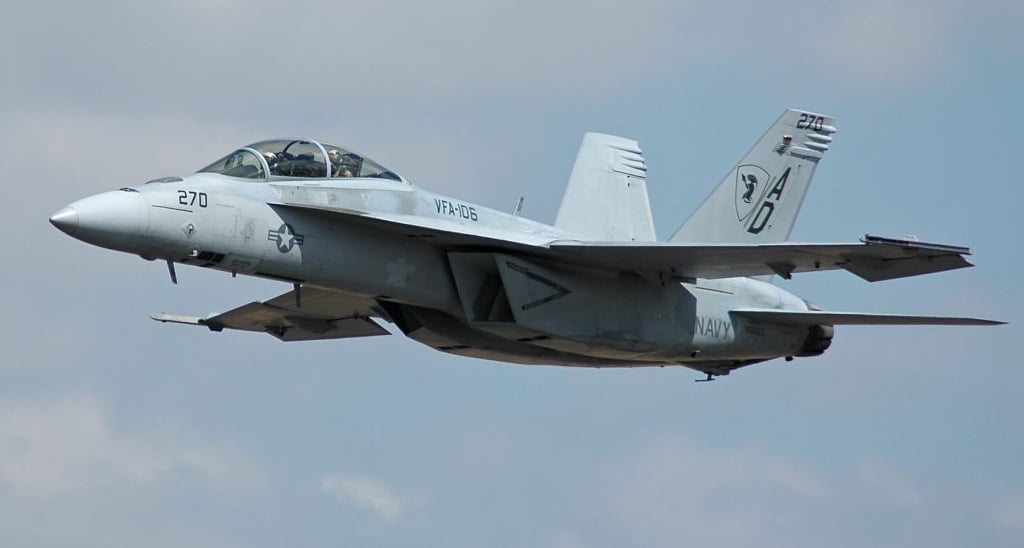Indian Navy's Fighter Aircraft Trouble
Admin
BLOGS
Presently, the Indian Navy operates a single aircraft carrier, the INS Vikramaditya, which is a STOBAR type carrier with a capacity of 26 aircraft. The Navy's inventory consists of 45 Russian-origin Mig-29s. As is well known, the availability of Mig-29 is rather unimpressive. According to a report published by CAG, its availability is estimated to be around 30-40%. This means that on an average, any given Mig-29 can only be operational 30-40% of the time. But recent unofficial reports state that this number is now much better, up to 70%, thanks to improved coordination between the Navy and the manufacturer.
The Navy’s fleet of 45 Mig-29s is split into two squadrons, INAS 303 - also known as Black Panthers and INAS 300 which is commonly referred to as White Tigers.


Now, considering only the Vikramaditya for the time being with its capacity of 26 airplanes, and a best-case scenario of 70% availability, the Navy has 32 airplanes ready to be deployed at any point in time. Clearly, with a carrier that can host 26 aircraft and 32 airplanes available to the Navy, the equation looks pretty good for the carrier to be at its full potential.
This comfortable picture changes when you take into account the induction of the upcoming, second aircraft carrier INS Vikrant. The capacity of INS Vikrant is also estimated to be about 26 airplanes. Together, the two carriers can operate a total of 52 airplanes as against the 32 available airplanes at the Navy's disposal. Clearly, the Navy needs more airplanes to fully reap the benefits of two Aircraft Carriers.
Now, speaking of India's indigenous 'Twin Engine Deck-based Fighter' or TEDBF as it's called, development is proceeding full swing, and the aircraft has been going through wind tunnel testing. There are news reports that work is also being done to decrease the radar cross section of the TEDBF, further moving it along to make it a 4.5+ generation aircraft. The Navy is collaborating closely with ADA to stay on track from a project timeline standpoint.


Once the developmental stage of this 13,500 crore-rupee project is complete, the first flight is scheduled to be in 2026. If it goes as planned, the TEDBF will enter service sometime between 2030-2035. Even if it's inducted in 2035, it will be in time for the retirement of the Mig 29s. The development phase is expected to be relatively short, as it will be deriving its avionics from the AMCA. The TEDBF is seen as a replacement for the Mig 29, and although it will be a great replacement hands down, the hard reality of timelines is that it will be around a decade before induction. Until then, the Navy will have to balance the limited inventory of aircraft between the two carriers. And we're not taking into account the possibility of a third aircraft carrier, which is actively being considered. If the third carrier gets approval, the Navy may need about 100 aircraft available at any time.
So the important question is, what is being done now?


An RFI was floated by the Navy in 2017 for 36 deck-based fighters, and the main contenders were the American F/A-18 Super Hornet and the French Rafale-M. There were news reports last year that the Navy is working with the Air Force for its carrier-borne aircraft needs, thus putting the Navy’s order alongside the MMRCA 2 tender. If this happens, it's quite likely that the Rafale may be the aircraft of choice, since the Air Force favours it over the Super Hornet. However, no further information is yet available on the matter.
But, from the Navy’s perspective, it's not clear if the Rafale would be the ideal platform as the Super Hornet seems to be more suitable considering the Navy's requirements. One of the advantages of selecting the Super Hornet would be the engine commonality with the upcoming TEDBF, as the TEDBF would also be based on the GE-414 engine... allowing for streamlined logistics and maintenance. The second advantage would be that the Super Hornet is manufactured by Boeing, which is also the manufacturer of the Navy’s P8-I aircraft, thereby increasing the inter-operability between the airplanes. The third advantage is that the Harpoon missile which is currently used on the P8-I could also be operated from the Super Hornet. Then, consider that the Super Hornet has foldable wings unlike the Rafale. Even though the difference in size between a Super Hornet with its wings folded and a Rafale isn't particularly large, even small differences can make a significant difference in the overall power of a carrier's air wing. When you have to fit as many aircraft as possible in the limited storage area within an Aircraft Carrier, every square foot counts.


The F/A 18 has been successfully tested from ski jumps and finally, considering the alliance of QUAD and the required interoperability between the Indian and US navies, it might make better sense to use an American platform rather than a French one.
At the end of the day, there are apprehensions and questions raised about whether it's a good idea for India to rely on American platforms, as things tend to change drastically whenever the administration changes in the US. In this situation, a deal that appears beneficial today may not be the same tomorrow. However, that remains an open question and a possibility to contend with. India continues to develop and mature its own platforms, and the Indian armed forces continue to reduce external dependencies as they move to homegrown platforms incrementally.

